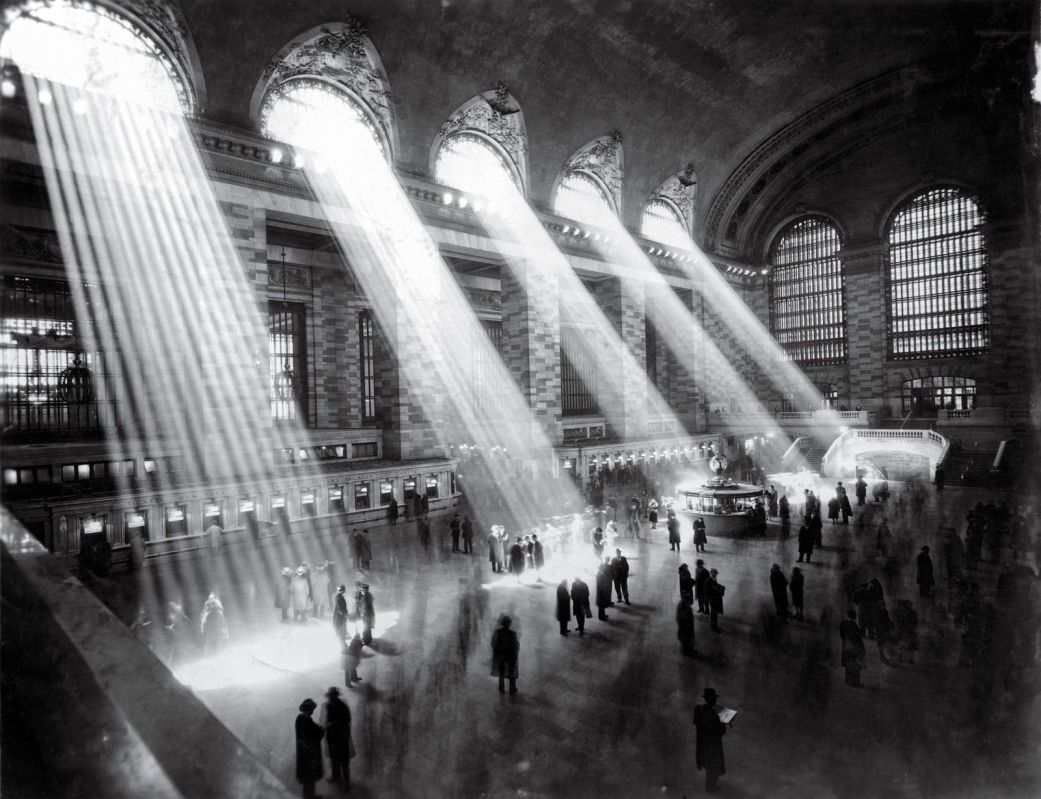1898-1991
Photographer Berenice Abbott has always been associated with depictions of Manhattan through her iconic images of New York City’s bridges, skyscrapers, stores, and street corners. Her specialty was crystal clear black-and-white images that were so legible that a viewer could make out the price of bread in a bakery window. For decades she photographed the people, landscape, architecture, and cityscapes of the United States.
She planned to be a journalist and attended Ohio State University School of Journalism before turning to art. She left Ohio in 1918 for New York where she tried acting and sculpting. In the 1920s when she was living in Paris, she saw photographs by Eugene Atget (1857-1927) who had recorded the architecture and streets of old Paris in the late 19th and early 20th centuries. She loved his devotion to realism and felt that New York City needed an equivalent to him. When he died in 1927, she purchased the bulk of his massive archive and sold it to the Museum of Modern Art. Because of her, his work has been preserved and is known throughout the world.
Between 1923 and 1925, she worked in Paris as an assistant in the studio of the multi-faceted American artist Man Ray. When Abbott left his employment, she set up a rival portrait studio on the Rue du Bac. Between 1926 and 1929, she was well established in Paris and photographed many expatriates and members of the European avant-garde, such as James Joyce and Andre Gide.
However, when she returned to New York in January nine months before the market crash of October 1929, she knew that she belonged in New York and not in Paris. “When I saw New York again, and stood in the dirty slush, I felt that here was the thing I had been wanting to do all my life.” She rejected portraiture and committed herself to photographing America.
She made New York City and its architecture of streets, piers, bridges, buildings, and train platforms her primary subject. She walked all over the city using a hand-held camera to take pictures. She recorded the changes that were happening: the destruction of old buildings and the growth of skyscrapers. She favored the storefronts of the Lower East Side and the new corporate skyscrapers of the Financial District. While documenting these changes for the WPA Federal Art Project, she taught photography at New York’s New School for Social Research from 1934 to 1958.
Her photographs show her broad interest in America’s man-made environments, from California’s logging roads to a former slave market in Georgia. While she had a gift for psychologically penetrating portraits, she is best remembered for her “Changing New York” series from the 1930s, which is in most major collections. The New York Public Library owns 100 prints from that series. Her most popular photograph “Night View, New York” 1932 shows an overhead view of Midtown Manhattan, lit up by the thousands of street lamps and lights in office windows. Most people would recognize her dramatic view of New York City’s Flatiron Building.
In the late 1950s through the 1960s, Abbott made photography to illustrate the laws of physics. She designed her own equipment and published manuals on the technical aspects of photography. Abbott was dismissive of her male colleagues: Edward Steichen, Alfred Stieglitz, and Ansel Adams. She was instead loyal to the documentary tradition of straight photography. Her work is in the permanent collections of major museums.
More here.
